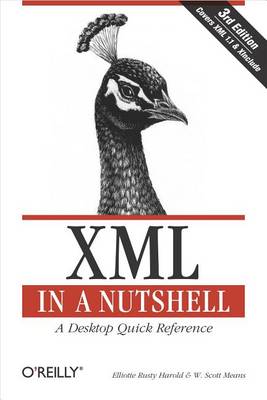In a Nutshell S.
1 total work
XML, the Extensible Markup Language, is a W3C endorsed standard for document markup. Because of its ability to deliver portable data, XML is positioned to be a key Web application technology. Aiming to address the complexity and potential of this markup language, this text provides a desktop reference which should allow users to take advantage of XML's full potential. The book shows how to format files and data structures correctly for use in XML documents. XML defines a basic syntax used to mark up data with simple, human-readable tags, and provides a standard format for computer documents. This format is flexible enough to be customized for transforming data between applications as diverse as Web sites, electronic data interchange, voice mail systems, and wireless devices, to name a few. Developers can either write their own programs that interact with, massage, and manipulate the data in XML documents, or they can use off-the-shelf software like web browsers and text editors to work with XML documents. Either choice gives them access to a wide range of free libraries in a variety of languages that can read and write XML.
The XML specification defines the exact syntax this markup must follow: how elements are delimited by tags, what a tag looks like, what names are acceptable for elements, where attributes are placed, and so forth. XML doesn't have a fixed set of tags and elements that are supposed to work for everybody in all areas of interest for all time. It allows developers and writers to define the elements they need as they need them. Although XML is quite flexible in the elements it allows to be defined, it is quite strict in many other respects. This text covers the fundamental rules that all XML documents and authors must adhere to, detailing the grammar that specifies where tags may be placed, what they must look like, which element names are legal, how attributes attach to elements, and much more.
The XML specification defines the exact syntax this markup must follow: how elements are delimited by tags, what a tag looks like, what names are acceptable for elements, where attributes are placed, and so forth. XML doesn't have a fixed set of tags and elements that are supposed to work for everybody in all areas of interest for all time. It allows developers and writers to define the elements they need as they need them. Although XML is quite flexible in the elements it allows to be defined, it is quite strict in many other respects. This text covers the fundamental rules that all XML documents and authors must adhere to, detailing the grammar that specifies where tags may be placed, what they must look like, which element names are legal, how attributes attach to elements, and much more.
